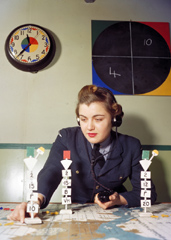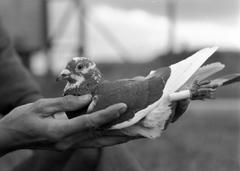

|
 |
Veterans’ Week 2006
A century of air power, a century of duty
By Holly Bridges
 Remembrance Day rallies Canadians to honour the sacrifices and achievements of Canadian veterans during nearly a century of wars and conflicts. It is also a time to reflect on the many sacrifices that, for the Air Force, began in the skies over France in 1914 and continues to this day. Remembrance Day rallies Canadians to honour the sacrifices and achievements of Canadian veterans during nearly a century of wars and conflicts. It is also a time to reflect on the many sacrifices that, for the Air Force, began in the skies over France in 1914 and continues to this day.
This week, we salute all military aviators who have served both in the air and on the ground, past and present, from peacetime and war, whose sacrifices and selflessness have helped shape Canada and the world into what it is today.
At the going down of the sun and in the morning, we will remember you.
 |
1914 - One of Canada's first military aviators was Lieutenant William F. Sharpe who joined the Canadian Aviation Corps in September 1914. He accompanied the first contingent overseas for advanced training but was killed in a flying accident in England on February 4, 1915, the first of more than 1 500 Canadian airmen who gave their lives in the First World War.
Credit: CFJIC |
| |
|
|

|
1942 - Flight Sergeant Pilot G.R. Webber waits on "readiness duty" at an RCAF station in northwestern Alaska during World War II. The RCAF had five squadrons in Alaska between 1942 and 1943 to assist with the United States North Pacific defence. Between 1939 and 1945, the Royal Canadian Air Force enlisted approximately 232 000 men and almost 17 000 women including some 260 women from Newfoundland, and operated 86 squadrons, including 48 overseas. 26 997 Canadian airmen including ground crew perished during the war. By the end of the war, the RCAF was the fourth largest air force in the world.
Credit: CFJIC |
| |
|
 |
An RCAF airwoman works at the plotting board in an unidentified headquarters operations room during the Second World War. Plotters, mostly female, kept track of hostile and friendly aircraft leaving and approaching the coasts of the British Isles and played a key role in winning key battles such as the Battle of Britain. |
| |
|
 |
“Thumbs Up” for victory and bright smiles testify to the joy of these two Manitoba girls as they left recently, complete with steel helmets, respirators, cloaks, anti-gas and duffle bags for overseas. They are serving with the RCAF in Great Britain. They are, left to right: Leading Airwoman Noreen Humphrey and AW1 Adele Grant. (ORIGINAL CAPTION)
Credit: CFJIC |
| |
|
 |
1943 - Many Canadians forced down at sea after dumping their bomb loads over Europe were saved by SOS messages flown home by RCAF homing pigeons. This photograph shows where the light plastic carrier tube for the message is attached to the pigeons left leg.
Credit: CFJIC |
| |
|
 |
1951 - Flying Officer Jean Drummond, an RCAF flight nurse chats with a patient prior to take-off from Haneda Air Base, Tokyo as part of Korean airlift operations in support of the United States Air Force. OPERATION Hawk, Canada’s participation in the air effort began in the early stages of the war when 426 Transport Squadron was attached to the U.S. Military Air Transport Service. By June 1954, the unit had flown 600 round trips over the Pacific, carrying more than 13 000 passengers and 3 000,000 kilograms of freight and mail without loss. Twenty-two RCAF fighter pilots and a number of technical officers served with the U.S. Fifth Air Force. Canadians were credited with 20 enemy jet fighters destroyed or damaged, as well as the destruction of several enemy trains and trucks.
Credit: CFJIC |
| |
|
 |
1981 - Corporal Susan Lefebvre, then an AWS Technician with 421 Squadron, Baden, helps download an AIM 7 Missile from a CF-18 during the Gulf War. The war erupted on January 17, 1991 and lasted until early March 1991. At its peak, the Canadian Air Task Group involved numbered 750 men and women serving in Qatar. By the end of active hostilities, the Canadian contingent had 26 CF-18s and a CC-137 tanker aircraft stationed in Qatar. In addition, Canada provided CC-130 Hercules and CC -137 airlift for all Canadian Forces operations in the Gulf region. During the conflict Canadian fighters fired their first shots since World War II.
Credit: CFJIC |
| |
|
 |
October 2006 - Corporal Mike Kerik from 4 Wing Cold Lake and Sergeant April Roach from 8 Wing Trenton unload a CC-130 Hercules aircraft at Camp Mirage. The Canadian Air Force has been supporting operations in Afghanistan and throughout Southwest Asia since fall of 2001 and has remained there ever since providing support to the Canadian Forces in theatre in terms of air mobility and intelligence, surveillance and reconnaissance through the use of Uninhabited Aerial Vehicles.
Credit: Sgt Roxanne Clowe |
| |
|
|
